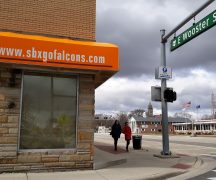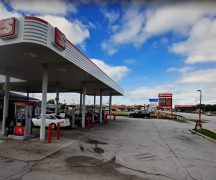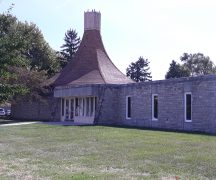By JAN LARSON McLAUGHLIN
BG Independent News
Shopping for universities has become a “buyer’s market,” and many prospective students and their families aren’t attracted to what Bowling Green is selling.
Bowling Green has received this “dose of reality” in the latest study on city development. Without making some major changes in the community, the report projects Bowling Green State University will likely see a big drop in enrollment.
The consultants have shared a painful truth, Mayor Dick Edwards said during Monday’s City Council meeting.
“Bowling Green has a major image problem that needs to be fixed,” Edwards said of the report. “The condition of the city is placing the university at a competitive disadvantage in attracting students.”
Edwards, however, objected to some of the bold statements in the report.
“I sincerely believe that we have not been standing still as a community,” he said. “I nevertheless agree that timing is critical and we have no choice but to move forward with deliberate speed on a priority basis.”
The “Strategy for Redevelopment” focuses on the East Wooster Corridor, and was researched by Development Strategies of St. Louis. Bowling Green State University contracted for the study that is looking at how to best develop the areas on the outer fringe of the university.
The city and university have been working on the East Wooster roadway for the past few years, with roundabouts and a new bridge over Interstate 75 underway.
But the report pointed out that the minor rezoning efforts by the city are not enough.
The report has an “unmistakable sense of urgency,” Edwards said.
Projections call for diminishing numbers of traditional age college students beginning in 2025. That will intensify the competitiveness in the marketplace. Also, students and parents are increasingly making decisions about colleges based on appearance of communities.
Communities like Kent have made substantial improvements in the areas adjoining the campus, Edwards said. Bowling Green is in the beginning stages of those efforts.
“The simple truth is that we as a community cannot afford the economic losses associated with declining enrollments,” the mayor said.
BGSU President Rodney Rogers has been awaiting the report.
“He clearly senses this urgency,” Edwards said. “The numbers are very, very telling.”
The numbers, which show the potential decline in enrollment, are a “dose of reality” for the university and the city, the mayor said.
The key to the city’s future along the East Wooster Corridor, according to Edwards, will be the ability to attract private investors to build in targeted areas along the corridor – such as the Thurstin-Manville intersection, the area near the Falcon Health Center, and the entry point into the city off I-75.
The city needs to make way for that development, according to the consultants. The city must create a “regulatory framework for development,” to establish standards for setbacks, landscaping, signage, architectural quality – and then make sure to stick with those standards.
“I agree with the consultants, the city must be proactive rather than reactive, and that means addressing as a matter of priority zoning issues, architectural standards and expanding the offerings of incentives,” Edwards said.
BGSU and the city will be meeting soon to set priorities based on the report.
“A shared vision between the city and the university on how best to move forward is paramount, and I have every reason to believe that the excellent working relationships between town and gown will continue unabated,” the mayor said.
Though the report points out deficiencies in the city, Edwards remained optimistic that the city can accomplish the goals set.
“I sincerely believe opportunities abound,” he said.
City Council members agreed on the sense of urgency and offered to assist in implementing the needed changes.
Council member Sandy Rowland praised the mayor’s push for progress.
“I think you’ve set the stage,” Rowland said to Edwards. “You made us take it seriously.”
The mayor pointed at successful efforts to change the East Wooster appearance – with the Marketplace development at North Prospect, the Falcon Health Center at South College, and soon the I-75 interchange improvements.
Edwards also noted the difficulty facing the Bowling Green City Schools Board of Education, with the district wrestling with complex funding issues.
Council member Bill Herald disputed the report’s characterization that the city hasn’t made progress.
“We’re moving forward, not stagnating,” Herald said, adding that it was important for city leaders to make plans before making changes. “We’re ready to take the community where it needs to be.”
Council member Bruce Jeffers asked about progress already made to attract investors to put money into development in the city.
City Planning Director Heather Sayler said it depends on the location. “There are a lot of moving parts,” she said.
BGSU is continuing to buy properties along East Wooster Street – which will help.
But council member Greg Robinette said it’s now up to council to do its job by passing zoning changes.
“It looks like the ball is in our court,” Robinette said. “We can control that by where we take action.
“It’s on the seven of us – that’s the way I see it,” Robinette said of council members.
Robinette said as he listened to the State of the County address last week, he thought about Bowling Green’s role.
“We have an opportunity to make sure Bowling Green shares in the success of Wood County economic development,” he said. “We’ve got to seize that opportunity.”





